The leaves of the rose turned yellow and began to fall: what to do, how to help the queen of the garden
Luxurious flowering of rose bushes brings joy and serves as a reward for the care and work expended. Unfortunately, it is often necessary to observe how suddenly the leaves of our beloved roses begin to wither and turn yellow.
If the roses began to turn yellow and fall off in the fall, then you should not worry too much. This is the natural aging and shedding of leaves before preparing the plant for winter.
Well, then we will consider the main reasons why the leaves of a rose turn yellow, how to feed and process the bushes in order to restore the strength and beauty of your garden queen.
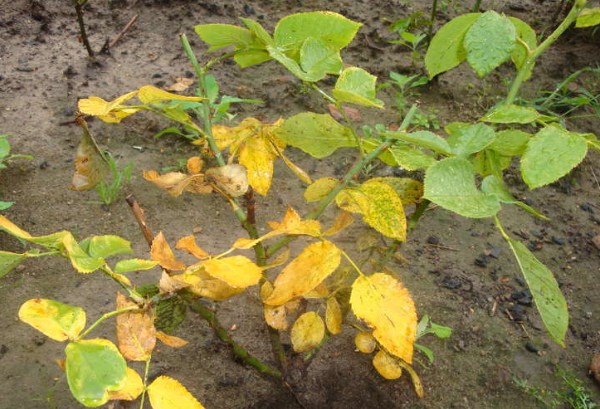
Content
Lack of batteries
Very often, yellowing of the leaves of a rose can cause deficiency of one or more nutrients: both basic macroelements (nitrogen, potassium) and microelements (iron, magnesium, manganese). In this case, the disadvantage can affect in different ways: the leaves turn yellow completely, in spots or from the edges.
By the way! The site already has a detailed article about how to properly feed roses in spring and summer for lush bloom.
Lack of macronutrients: nitrogen and potassium
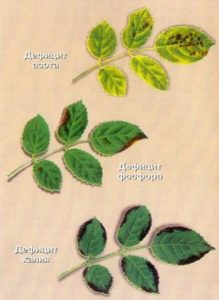
Nitrogen
In case of nitrogen deficiency, young leaves turn pale at first (acquire a pale green color), Further turn completely yellow (no green veins remain, as with a lack of iron or manganese, except that reddish spots may additionally appear), and then fall prematurely. Young shoots also turn yellow, which, in addition, also slow down in growth.
As a rule, nitrogen starvation occurs due to the fact that you originally planted the rose in poor and sandy soil.
Obviously roses need nitrogen fertilization, and it is better to conduct it under the root (i.e. in liquid form, in other words, prepare a solution or infusion). As nitrogen fertilization can be used urea (carbamide), ammonium nitrate, calcium nitrate, green manure, cow dung or mullein, bird droppings.
Potassium
In case of potassium deficiency old lower leaves of roses turn yellow at the edges, gradually begin to turn brown and dry (they also say that what is happening marginal burn). The very inner part of the leaf blade remains green. Further lower leaves may fall prematurely.
Moreover, young leaves are reddish in color.
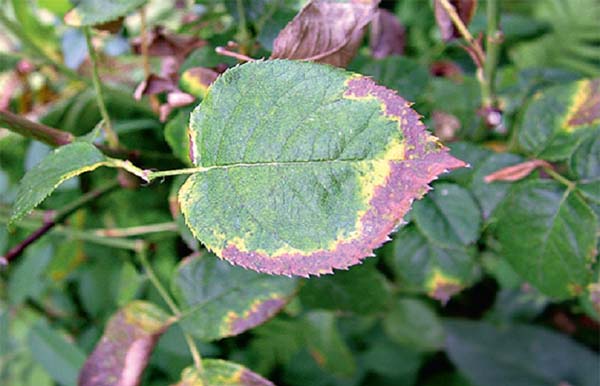
Again, it is required to carry out potassium dressing, for example, potassium sulfate (potassium sulfate), potassium nitrate (potassium + nitrogen), potassium magnesium (potassium + magnesium), wood ash (potassium + trace elements).
Phosphorus
Note! With a lack of phosphorus, no yellowing occurs. Young leaves become small and dark green, the lower (old) - reddish-purple.
Lack of trace elements: iron, magnesium, manganese
Yellowing of the leaves to one degree or another can occur in the case of a lack of one or more trace elements:
In the case of a deficiency of microelements, it is optimal to carry out foliar feeding - spraying on the leaves, and it is advisable to do this in the evening or early in the morning, but not in the afternoon, when the sun is bright and scorching.

Advice! As a rule, with a lack of microelements, it is precisely complex fertilizers that are used, which include most of the microelements, for example, such as Humat + 7.
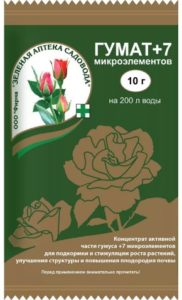
- With a lack of magnesium — the edges leaves remain green, like the veins, but the central part becomes yellow, reddish spots appear inside it. Magnesium deficiency first appears on the lower old leaves, and then on the upper young ones.
As for what to feed, it is perfect magnesium sulfate (magnesium sulfate).
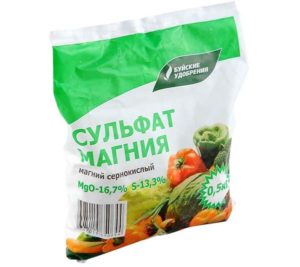
- The most common cause of yellow leaves in roses is a lack of glandwhich leads to chlorosis of young upper (unlike manganese, when the old lower ones get sick first) plant leaves (leaf blade turns yellow as in nitrogen starvation, but veins remain green).
The most popular remedy for iron deficiency is Ferovit.
By the way! Many still advise using inkstone, but this is primarily a fungicide, not a micronutrient fertilizer.
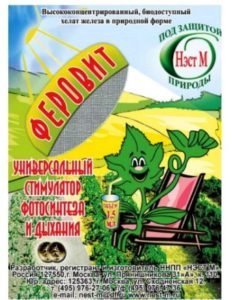
- When lack of manganese are primarily affected bottom old leaveswhich turn yellow from the edges to the middle of the sheet, wherein veins remain green (as in iron deficiency).
To make up for manganese deficiency, roses can be fed manganese sulfate.
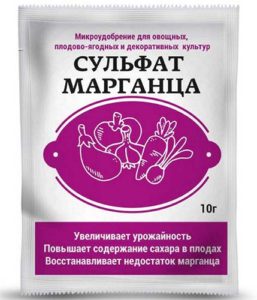
Worth knowing! Lack of iron and manganese is most often observed on overly alkaline soil (Ph above 7-7.5). In other words, in addition to spraying roses with micronutrient fertilizers, you need change soil acidity, leading it to a normal or slightly acidic reaction (5.6 to 7.0 Ph). For example, you can cover the soil with peat, forest foliage or coniferous litter.
Lack of lighting
Due to the lack of sunlight, the leaves of the rose may begin to turn yellow (as a rule, the lower ones, because they are less illuminated), as well as the stems become thinner and the flowers become smaller. Therefore, it is recommended to place the rose garden in sunny areas, while carefully ensuring that there is no thickening (this is why roses, especially climbing roses, should be regularly cut and thinned - in the spring and / or in autumn (for winter).
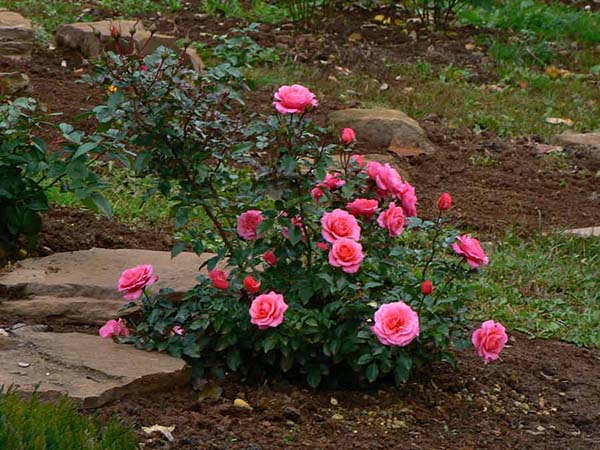
Improper watering
Watering roses should be moderate.
Rose leaves may turn yellow due to improper watering caused by:
- waterlogging (overflow), when the earth is literally swampy and the roots are in damp soil for too long, which is why they no longer have enough oxygen for normal functioning. Wherein yellowing itself is very similar to a lack of nitrogen (it starts from the bottom, moreover, the leaf turns yellow completely);
In this case, you need to adjust the watering regime downwards, and if you have heavy clay soil, then transplant roses from the lowlands to higher flower beds (mound, warm beds).
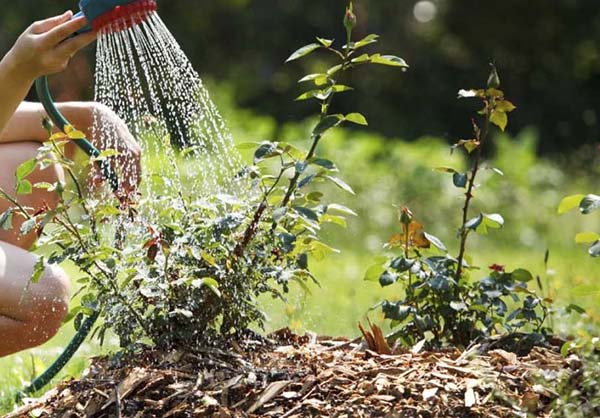
- rare watering (drying out)when the leaves not only turn yellow due to lack of moisture, but also curl upand then dry up and fall off.
In this case, you need to increase the frequency and / or volume of watering, and also, if possible, mulch the near-stem circle (mulch will reduce the evaporation of nutrient moisture).
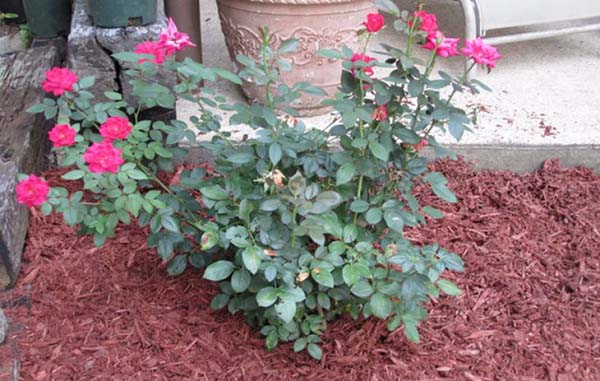
Diseases and pests
Naturally, various diseases and pests that affect bushes during their growing season can cause yellowing of rose leaves.
Worth knowing! Potash fertilizers much increase the immunity and resistance of roses to many diseases, therefore, in any case, do not allow potassium deficiency in the soil.
Black spot
Black spot (marsonia) initially appears as the formation of black spots on the leaves of roses, which eventually turn yellow and fall off.
Advice! More details about black spotted roses read in this separate article.
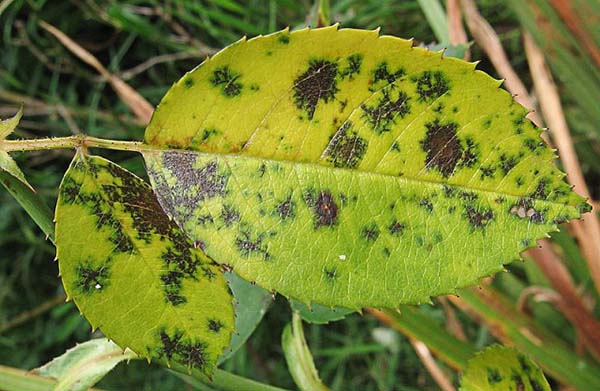
Rust
The process of rusting the leaves of a rose is as follows: first, small orange bumps appear, which eventually grow and fill most of the leaf plate, as a result, you can see a rusty bloom on the leaves on the back (inner) side.

Unfortunately, it is very difficult to deal with rust on roses, except that the complete removal of all affected leaves along with the petioles can help, and this must be done promptly.
Also, for the prevention and protection of roses from rust, copper-containing preparations can be used: the same Bordeaux liquid or copper sulfate, as well as a biological preparation Fitosporin.
With a strong infection, it is almost impossible to save roses, and most likely you will have to dig up the bush and burn it so that the disease does not spread to other plants.
Viral diseases (mosaic)
If you notice yellow streaks on the leaves of a rose, then most likely your roses are infected with the mosaic virus, which is often introduced in the nursery during grafting.

As you know, viral diseases cannot be cured, but here's what you can try to do: cut tightly, remove all infected leaves and process several times with Skor, Ridomil and Strobi.
In any case, if the plant receives enough nutrition, looks quite strong, then you do not need to take and immediately get rid of such a rose.
Pests
Often, rose leaves can acquire a yellow (as well as wither and crumble) shade due to damage from pests that suck the juice from the leaves.
The main pests of roses are:
- aphid;
By the way! The site already has a detailed article about how to deal with aphids on roses.
- spider mite;
- thrips;
- rose leafhopper.
What to do, how to treat roses from pests?
The most popular insecticidal preparations (anti-pests) for pests on roses are: Aktellik, Aktaru, Spark, Fitoverm, and also the same tobacco dust.
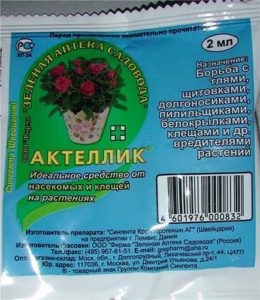
By the way! Rose leaves may turn yellow due to root damage beetle grub (beetle larva)... In this case, you need carefully excavate the root system, remove and destroy the pests. In general, it is good to use the drug against crumbling. Antikhrusch.
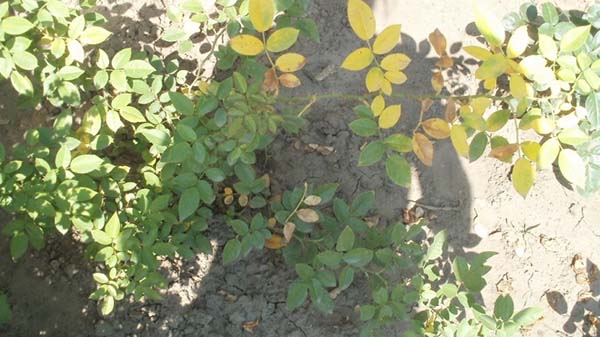
Thus, now you know why the leaves of roses can turn yellow, which means you can quickly help your plant by adjusting the care, feeding or spraying against diseases and / or pests. Good luck and beautiful blooming to your rose garden!


Nadezhda, excellent articles. I want to save as bookmarks for future use. Thank you very much.
Thank you very much for your feedback! I try for you 🙂
Thank you very much for the necessary and understandable information!
Good day. I would be glad to read your advice.